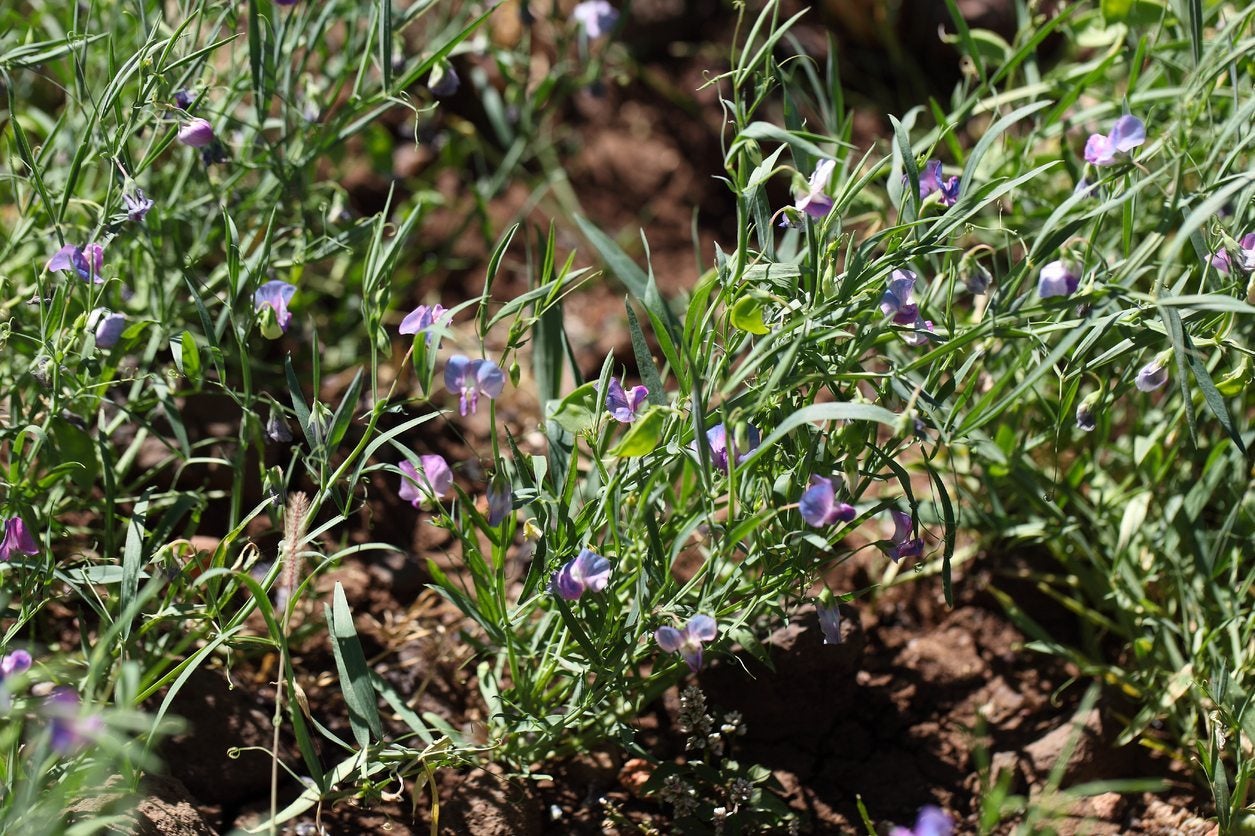What Is Chickling Vetch – Growing Chickling Vetch For Nitrogen Fixing


What is chickling vetch? Also known by various names such as grass pea, white vetch, blue sweet pea, Indian vetch, or Indian pea, chickling vetch (Lathyrus sativus) is a nutritious legume grown to feed livestock and humans in countries around the world.
Grass Pea Information
Chickling vetch is a relatively drought-tolerant plant that grows reliably when most other crops fail. For this reason, it is an important source of nutrition in food-plagued areas. Agriculturally, chickling vetch is often used as a cover crop or green manure. It is effective as a summer crop, but can overwinter in mild climates after fall planting. Chickling vetch has ornamental value as well, producing white, purple, pink, and blue blooms in midsummer, often on the same plant. Planting chickling vetch for nitrogen is also common. Chickling vetch fixes a tremendous amount of nitrogen in the soil, importing as much as 60 to 80 pounds (27 to 36.5 kg.) of nitrogen per acre (4047 sq. m.) when the plant grown for at least 60 days. It also provides a huge amount of beneficial organic matter that can be composted or plowed back into the soil after flowering. The creeping vines and long roots provide excellent erosion control.
How to Grow Chickline Vetch
Growing chickling vetch is an easy endeavor with just a few guidelines to follow. Chickling vetch is suitable for growing in average temperatures of 50 to 80 F. (10 to 25 C.). Although chickling vetch adapts to nearly any well-drained soil, full sunlight is a necessity. Plant chickling vetch seeds at a rate of 2 pounds (1 kg.) per 1,500 square feet (140 sq. m.), then cover them with ¼ to ½ inch (0.5 to 1.25 cm.) of soil. Although chickling vetch is drought tolerant, it benefits from occasional irrigation in hot, arid climates.
Note on Toxicity of Chickling Vetch Seeds
Immature chickling vetch seeds can be eaten much like garden peas, but they are toxic. Although the seeds are harmless in small quantities, eating large amounts on a regular basis may cause brain damage in children and paralysis below the knees in adults.
Sign up for the Gardening Know How newsletter today and receive a free copy of our e-book "How to Grow Delicious Tomatoes".

A Credentialed Garden Writer, Mary H. Dyer was with Gardening Know How in the very beginning, publishing articles as early as 2007.